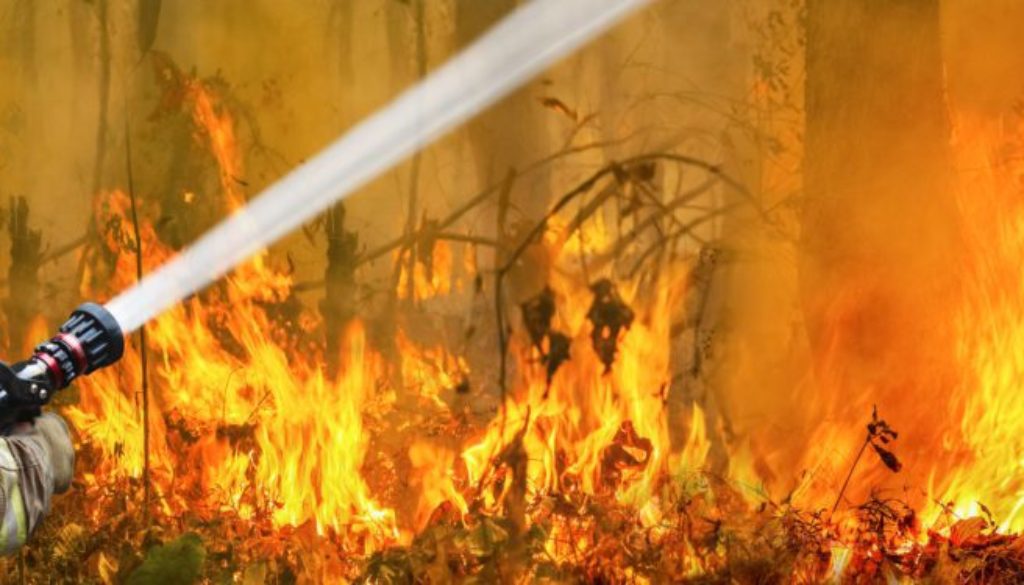Comment les collectivités peuvent-elles se préparer à l’évacuation rapide en cas d’incendie de forêt ?
It only takes seconds for a wildfire to turn disastrous. Wildfires can travel from 6 to 14 miles per hour and are unpredictable, making them some of the worst natural disasters the country has seen.
There are an estimated 100,000 wildfires in the U.S. every year, destroying 4 to 5 million acres of land in their paths. Wildfires can happen anywhere, but they are most common in the Southeastern states of Florida, Georgia, and Tennessee and in the western states of Montana, Idaho, Wyoming, Colorado, Oregon, and California.
How wildfires can quickly become a natural disaster
Wildfires can occur naturally by the heat from the sun or lightning strikes. However, the vast majority of wildfires are caused by human activity — campfires left unattended, cigarettes tossed onto the ground, and arson.
Wildfires are fueled by trees, shrubs, and houses and are spread by increased access to high temperatures, oxygen, wind, and humidity, making California a prime location for large and uncontrollable wildfires.
15 of the 20 largest wildfires since 2000 have occurred in California. In 2018, the state experienced its costliest, deadliest, and largest wildfires on record, destroying over 18,733 buildings, burning 153,336 acres of land, and killing a total of 85 people. It was the world’s costliest natural disaster in 2018, amounting to $16.5 billion in damage.
Wildfire preparedness saves lives
Timing is crucial when considering how communities will successfully respond to wildfires in their area. Though advanced warning is sometimes issued when a fire occurs, they can quickly escalate into massive wildfires, sometimes overnight. Emergency managers, 9-1-1 teams, first responders, and local government officials need to be ready at a moment’s notice for not only the natural disasters themselves but the devastating destruction they leave behind.
Being able to evacuate residents quickly and safely is critical during wildfire outbreaks. If communities fail to mobilize quickly, residents can become trapped in the area, putting their lives at risk.
Having an alert system in place, ready to activate on the spot, can save precious time by accelerating the evacuation process, and ultimately, saving lives.
Community-centered plan of action: preparing for nature’s fury
The key to a successful plan of action is communication. Having a system in place that notifies residents before wildfires hit their area is crucial for ensuring everyone’s safety. A mass notification system allows crisis managers and other key stakeholders to send notifications through any internet-connected device.
Emergency notifications can be sent via text, email, voice call, desktop alerts, sirens, and digital signage, all at the same time.
In addition to multimodal messages, local government officials, state government, businesses, K-12 schools, universities, and other institutions can prepare by creating templates that include the type of emergency, date, location, and what method of response is best.
A mass communication system can also ensure that at-risk individuals get the care they need.
Key stakeholders are notified of at-risk residents in their communities (such as children, older adults, pregnant women, those experiencing homelessness, those who have chronic health conditions, and those who have limited English proficiency) and can compile vital resources into their own databases, such as personal data (addresses, medical records, and photos) for 9-1-1 operators and first responders.
How Rave Mobile Safety can help
K-12 Schools
Understand the breath of wildfires in the area and initiate response and recovery procedures that keep students, staff, and parents informed.
Hospitals
Mass notifications systems can prepare large hospitals and other healthcare facilities to evacuate safely while still providing critical care.
Federal
Enhance critical communication and collaboration to enable interoperable wildland fire operations among Federal, State, Local, Tribal, and Territorial partners. Timely and targeted communication is essential as wildfires spread. Rave’s FedRAMP authorized safety platform can contribute to safe, effective, and coordinated national interagency wildland fire operations.
State or local community
Prepare communities with evacuation routes and action plans when wildfires spread to your area.
Corporate
Crisis managers can check-in on their employees before, during, and after devastating wildfires and ensure their safety throughout.
Higher Education
University officials can inform their campuses of impending danger from wildfires with accurate information and clear action plans.
Fires happen anywhere, any time
Because wildfires can happen anywhere, at any time, it’s important to have a system in place. Communities all over the nation that aren’t normally affected are being hit by devastating wildfires, and instances of wildfires are expected to continue to increase.
To save lives and speed evacuations for future scenarios, state and local governments as well as key community stakeholders can begin to find solutions before they’re needed. A critical communication and collaboration tool can offer first responders, hospitals, and communities the most up-to-date information as a wildfire begins.
Rave Mobile Safety’s solutions can also offer guidance on evacuation routes, give first responders an increased level of situational awareness, and allow check-ins to keep track of community members.
Seconds matter when protecting your community from wildfires. Find out how you can better prepare your residents, employees, and students at: www.ravemobilesafety.com/solutions/





